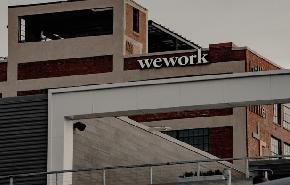SAN FRANCISCO- With building values now down approximately 50% from their peak, tenants should be negotiating lease terms that ensure building owners are passing along their savings. This is the advice of Studley, a New York City-based brokerage firm that represents only tenants.
“Tenants should negotiate lease terms that require landlords to seek property tax reductions and, if successful, to pass through savings, particularly in the case of anchor or sole tenants,” according to the company’s preliminary fourth quarter report. “Additionally, while many gross leases contain provisions whereby the tenant is responsible for increases over base year expenses, tenants should seek the benefit of decreases as well. Owners of more than 1,000 commercial properties in San Francisco have asked the Office of the Assessor-Recorder to have their property taxes reduced this year, based on lower building values.”
As previously reported on GlobeSt.com, Brookfield Properties has foreclosed on 333 Bush St., while Morgan Stanley, one of San Francisco’s largest landlords, is preparing to give back to its lender five major downtown office properties. Due to the short-term debt that was used to purchase over 60% of the commercial office buildings in San Francisco between 2006 and 2008, Studley believes more properties “are bound” to follow a similar path.
“Available space will continue to hit the market in 2010 as companies downsize and renew at smaller footprints, adding to the 20% of inventory that is already available,” Studley predicts. “Rental rates will soften and tenant leverage in lease negotiations will remain considerable as buildings transition back to lenders or are sold to new owners at a lower cost basis.”
While leasing rebounded somewhat during the fourth quarter, Studley says overall leasing activity on a trailing four-quarter basis totaled 4.4 million square feet. That is 26% below the previous year and far below the market’s 10-year historical average of 7.8 million square feet.
San Francisco’s overall availability rate, now 20%, fell by 20 basis points quarter-over-quarter but is 340 basis points higher on a year-over-year basis. The class A availability rate, 17.6%, declined by 80 basis points for the quarter. The number of available large contiguous blocks of space (50,000 square feet or more) rose to 50, compared to 45 last quarter, and 38 last year, according to Studley.
Asking rents have retreated to 2006 rates, according to Studley. The overall asking rent averaged $28.95, down 3% from the third quarter and 15.7% from the fourth quarter of 2008. The class A asking rent, at $29.89, is down 3.4% from the third quarter and down 17.8% from the fourth quarter of 2008.
Studley says rental rates and occupancy will decline in 2010. Forecasted employment gains and economic recovery will set the stage for a comeback in the local real estate market in 2011, it says.
A recent study by Jones Lang LaSalle, which represents both tenants and owners, says while the local office market produced 1.3 million square feet of negative net absorption in 2009, the city’s top 50 buildings posted positive net absorption over the second half of the year, albeit nominal, as tenants took advantage of poor market conditions for owners to upgrade their office space without increasing their occupancy costs.
Colliers International, which also represents both owners and tenants, said earlier this month that sublease office availabilities here have been on the decline and now stand at 2.25 million square feet, 61% (1.37 million square feet) of it currently vacant and about one-fifth of it expiring over the next 12 months. The total has been declining since August, when it peaked at 2.72 million square feet. To date this year, 1.8 million square feet of space has been listed for sublease, with about 40% of it coming to market already vacant.
“There definitely appears to be more demand for it, especially shorter-term subleases on the part of the tech sector,” Marty Melbardis, a first vice president with Colliers who represents both tenants and building owners, tells GlobeSt.com. “They are looking for great economics, but they prefer the two- to three-year term, or even less in some cases, because it fits their business model, which typically call for rapid growth.”
There are currently 308 sublease office listings in the market. The average sublease size is 7.316 square feet. The average term is 33 months and the average time listed is approximately nine months (260 days). About 20% of the total sublease listings (63) and about 20% of the sublease space (473,023 square feet) is tied to leases expiring within the next 12 months.
“As these leases being marketed for sublease expire and go direct, it could cause more distress for owners but it could also help stabilize the market from a rental rate standpoint,” Melbardis says. “You’re no longer going to have those $12- to $18-per-square-foot sublease asking rates being averaged in and the rate on that space instantly goes to $30 per square foot.”





 Copyright © 2024 ALM Global, LLC. All Rights Reserved.
Copyright © 2024 ALM Global, LLC. All Rights Reserved.











